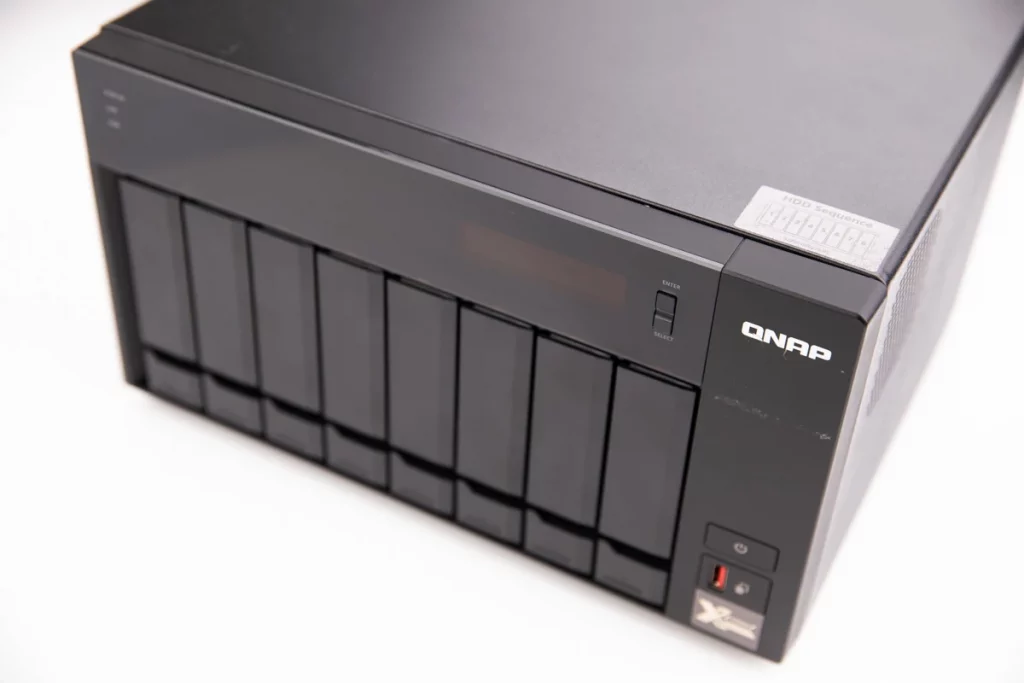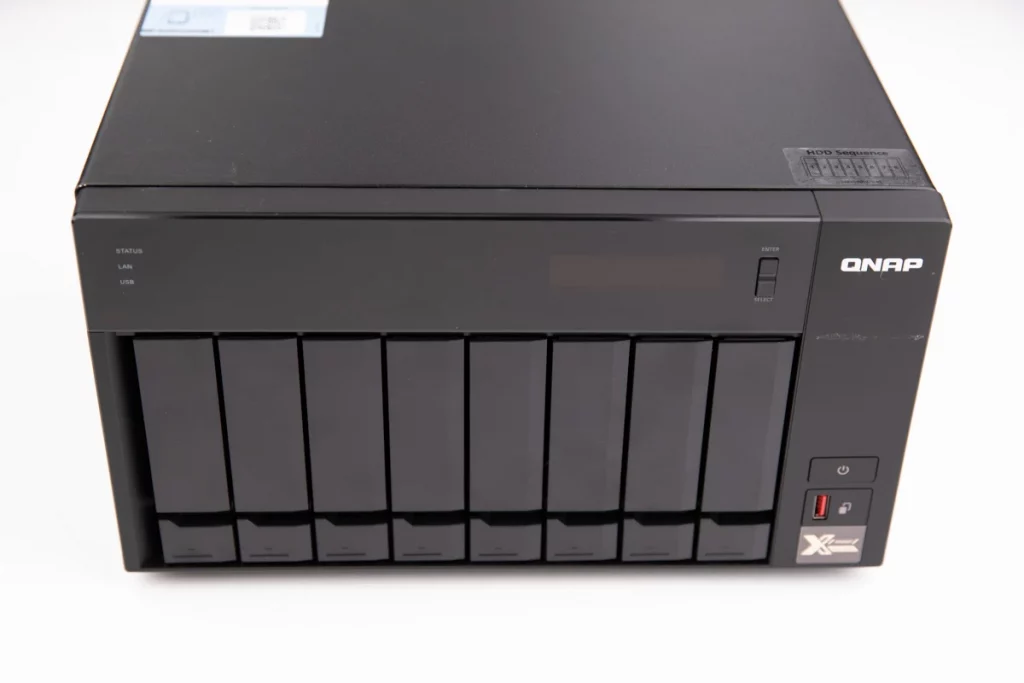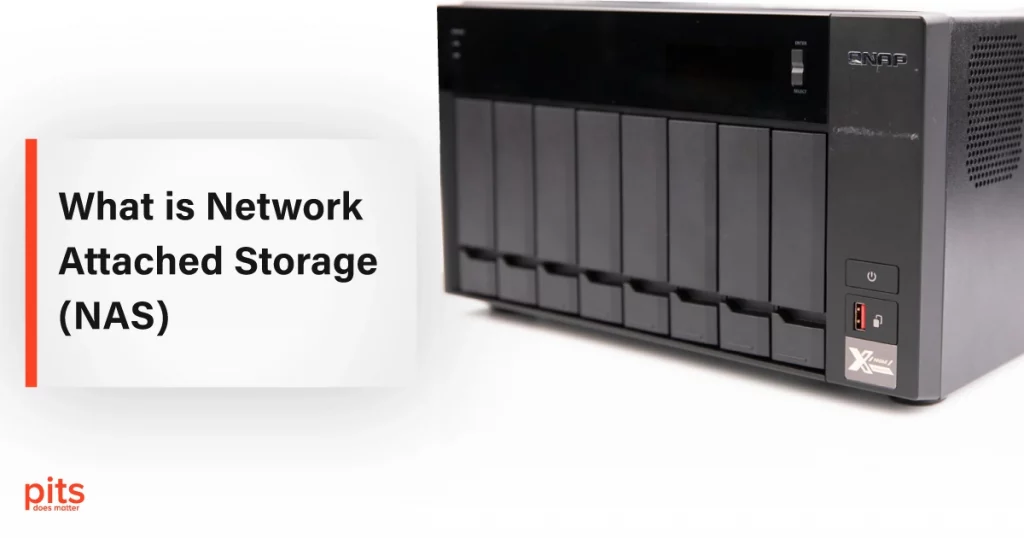Network Attached Storage (NAS) has revolutionized the storage landscape. In the past, storing data was a costly and complicated process. Companies would have to purchase expensive hardware and hire dedicated staff to manage it. However, new solutions have emerged as technology has advanced that have made storage more affordable and accessible. One of these solutions is Network-Attached Storage (NAS). But what is a Network-Attached Storage device?
What Does Network Attached Storage Mean?
Network-Attached Storage, commonly abbreviated as NAS, is a storage system that enables multiple devices to access the same data over a network. It is essentially a file server that is dedicated to storing and serving files to other devices. NAS devices are typically small, compact, and can be easily added to an existing network. They are designed to provide users with a convenient way to store, back up, and share data across multiple devices without the need for a dedicated server.
NAS devices are easy to set up and manage and offer a range of features and benefits that make them an attractive option for users. Network-attached storagedevices can be used in both home and business environments, and they are a popular choice for small and medium-sized businesses (SMBs) that require centralized storage. They can also be used by individuals who need to store and share large amounts of data, such as photos, videos, and music.
How NAS (Network-Attached Storage) Works
NAS devices are connected to a network via Ethernet and function as standalone storage servers. They are typically equipped with one or more hard drives, which are used to store data. The NAS device acts as a file server and can be accessed by multiple devices simultaneously. When users want to access a file on the NAS device, they connect to the network and access it through the NAS device.
NAS devices use a variety of protocols to share data over the network, including NFS (Network File System), SMB (Server Message Block), and AFP (Apple Filing Protocol). These protocols enable devices to connect to the NAS device and access stored files. NAS can also be configured to work with different operating systems, such as Windows, Mac OS, and Linux, making it a versatile storage solution for various environments.
Benefits of Network-Attached Storage (NAS)
NAS devices offer a range of benefits that make them attractive storage solutions for home and business users. Hence, they are considered a flexible and efficient storage option.
Centralized storage
NAS devices provide a centralized location for storing and sharing files. Users can access files from anywhere on the network, making sharing data between multiple devices easy.

Data backup
NAS devices can back up data from multiple devices, providing an added layer of protection against data loss. Many NAS devices come with built-in backup software, making scheduling and automating backups easy.
Data Sharing
NAS devices enable multiple users to access the same data simultaneously. This means teams can easily collaborate on projects and share files, improving productivity and streamlining workflows.
Scalability
NAS devices are highly scalable, meaning they can be expanded as needed. Users can add additional hard drives to the device to increase storage capacity. They can also add NAS devices to the network to create a larger storage infrastructure.
Remote Access
Many NAS devices offer remote access capabilities, meaning users can access files from outside the network. This is useful for users who need to access files while on the go or who work from home.
Ease of Management
NAS device is easy to set up and manage. Many NAS devices come with user-friendly interfaces and built-in software that makes it easy to manage files, configure settings, and monitor the device.
Types of NAS Devices
Several different types of Network-Attached Storage (NAS) devices are available, each with its features and capabilities. Here are some of the most frequent types of NAS devices:
Single-Drive NAS
Single-drive NAS devices are the most basic type of NAS device, and they are typically designed for home users or small offices. As the name suggests, these devices contain a single hard drive. They generally are less expensive than other types of NAS devices. Single-drive NAS devices are easy to set up and use but have limited storage capacity and are unsuitable for large-scale data storage.
Multiple-Drive NAS
Multiple-drive NAS devices are designed for businesses or users who require larger storage capacities. They contain multiple hard drives, which can be configured in various RAID configurations for added data protection and performance. Although multiple-drive NAS devices are more expensive than single-drive devices, they offer greater storage capacities and flexibility.

Rackmount NAS
Rackmount NAS devices are designed for businesses that require high-performance storage solutions. They are mounted in a server rack and typically offer higher storage capacities and faster transfer speeds than other types of NAS devices.
Rackmount NAS devices are more expensive than other types. They require a dedicated server room or data center to operate.
Cloud-Based NAS
Cloud-based NAS devices are a newer type of NAS device that uses cloud storage to provide storage and sharing capabilities. Cloud-based NAS devices are useful for users who require remote access to their files or who need to collaborate with others over the internet. These devices are typically more affordable than traditional NAS devices but require an internet connection.
Choosing the Right NAS Device
When choosing a Network-Attached Storage (NAS) device, several factors must be considered. Here are some of the most valuable factors to keep in mind for a user:
Storage Capacity
The storage capacity of the NAS device is one of the most essential features to consider. Consider the amount of data you need to store now and in the future, and choose a media that offers enough storage capacity to meet your needs.
The Number of Users
The number of users who will be using the NAS device is another important factor to consider. Choose a device that can accommodate the number of users accessing it and ensure that it has sufficient processing power to handle multiple users simultaneously.
Data Protection
Data protection is essential when it comes to storing important data. Look for a NAS device that offers RAID configurations or other data protection features to ensure your files are safe during a hardware failure.
Ease of Use
Choose a Network-Attached Storage device that is easy to set up and manage and has user-friendly software that makes it easy to configure settings and manage files.
Common Causes of Data Loss on NAS
Although Network-Attached Storage (NAS) devices are designed to provide centralized storage and data protection, data loss can still occur for various reasons. Here are some common causes of data loss on NAS devices:
Hardware Failure
Like any electronic device, NAS devices can fail due to hardware issues such as hard drives or power supply failure. When a hard drive fails, data stored on it may become inaccessible, and if there is no redundancy in place, data can be permanently lost.
Human Error
Accidental deletion of files, formatting of drives, or misconfiguration of the NAS device can lead to data loss. It is important to have a backup strategy and implement strict access controls to prevent unauthorized access or deletion of data.
Malware or Ransomware
Malware or ransomware attacks can compromise the security of NAS devices, leading to data loss or theft. It is important to implement robust security measures such as intrusion detection systems, antivirus software, and firewalls to prevent such attacks.
Software Issues
NAS devices can experience software issues such as corruption or misconfiguration, leading to data loss. It is important to keep the NAS device firmware and software up-to-date and to perform regular maintenance to prevent software-related issues.
Data Recovery for NAS Provided by PITS
PITS Global Data Recovery Services is a reputable data recovery company that provides NAS data recovery services. Our team of experienced engineers and technicians has the expertise and tools to restore data from all NAS devices, regardless of the cause of data loss.
Our NAS data recovery process begins with a thorough analysis of the device to determine the cause of data loss and the extent of the damage. We then develop a customized data recovery plan tailored to each customer’s specific needs. Our team works quickly and efficiently to recover the data, using advanced techniques and tools to ensure the highest possible success rate.
We have experience in recovering data from all major NAS brands
At PITS Global Data Recovery Services, we understand that data loss can be a stressful and frustrating experience. That is why we provide fast and efficient service, committed to customer satisfaction.
We also prioritize the security and confidentiality of our customer’s data. Our state-of-the-art recovery facility is equipped with the latest security measures, and our team members are trained to handle sensitive data with care and confidentiality.
In addition to NAS data recovery, we provide data recovery services for many other devices, including hard drives, SSDs, USB drives, memory cards, and more. We also offer data destruction services for customers who need to erase data from their devices securely.
PITS Global Data Recovery Services is a trusted provider of NAS data recovery services, with a team of experienced engineers and technicians with the experience and tools to restore data from all NAS devices. We offer fast and efficient service, are committed to customer satisfaction and have the highest data security and confidentiality level. If you have experienced data loss on your NAS device, contact us today for more information about our recovery services.
Frequently Asked Questions
What is Network-Attached Storage (NAS)?
Network-Attached Storage (NAS) is a specialized file storage device or system that is connected to a computer network, allowing multiple users and devices to access, share, and store data. It provides a centralized storage solution that can be accessed by users over a local area network (LAN) or the internet.
How does NAS work?
NAS operates as an independent file server on a network, using its own operating system and hardware. It connects to the network through Ethernet or Wi-Fi and is assigned an IP address. Users can access the NAS by mapping the shared folders or by using specific NAS software. NAS devices typically use RAID (Redundant Array of Independent Disks) technology to provide data redundancy and protect against disk failures.
What are the advantages of using NAS?
- Centralized storage: NAS provides a single location for storing and accessing files, making it easy to share data across multiple devices and users.
- Data backup and protection: NAS often includes built-in backup and data protection features, such as RAID configurations, snapshot capabilities, and remote replication, ensuring data integrity and minimizing the risk of data loss.
- Scalability: NAS systems can be easily expanded by adding additional hard drives or upgrading existing ones, allowing for flexible storage capacity based on evolving needs.
- File sharing and collaboration: NAS enables simultaneous access to files from multiple devices, facilitating collaboration among users within a network or even remotely.
- Media streaming: Many NAS devices have built-in media server capabilities, allowing users to stream videos, music, and other media files to compatible devices like smart TVs or mobile devices.
What can I use NAS for?
- File sharing and centralized storage for home or small office environments.
- Backup and disaster recovery solutions.
- Media server for streaming videos, music, and photos to various devices.
- Personal cloud storage for remote access and file synchronization.
- Surveillance storage for recording and managing security camera footage.
- Virtualization storage for hosting virtual machines and applications.
Do I need technical expertise to set up and use NAS?
While basic technical knowledge can be helpful, NAS systems are designed to be user-friendly and straightforward to set up. Most NAS devices come with their own setup wizard and web-based management interface, making it easy to configure and manage the device without extensive technical expertise. However, for more advanced configurations or troubleshooting, some level of technical proficiency might be required.
Can I access NAS over the internet?
Yes, many NAS systems offer remote access capabilities, allowing you to access your files securely over the internet. This feature often involves setting up a secure connection (e.g., using a VPN) or using the NAS manufacturer’s cloud services. By accessing your NAS remotely, you can retrieve files, stream media, and perform other tasks as if you were connected to the local network.
Can I expand the storage capacity of a NAS?
Yes, most NAS devices support storage expansion. You can usually add more hard drives to increase the storage capacity, or in some cases, you can replace smaller drives with larger ones. Additionally, some NAS systems support external storage expansion through USB or eSATA ports, allowing you to connect external hard drives or expansion units.
